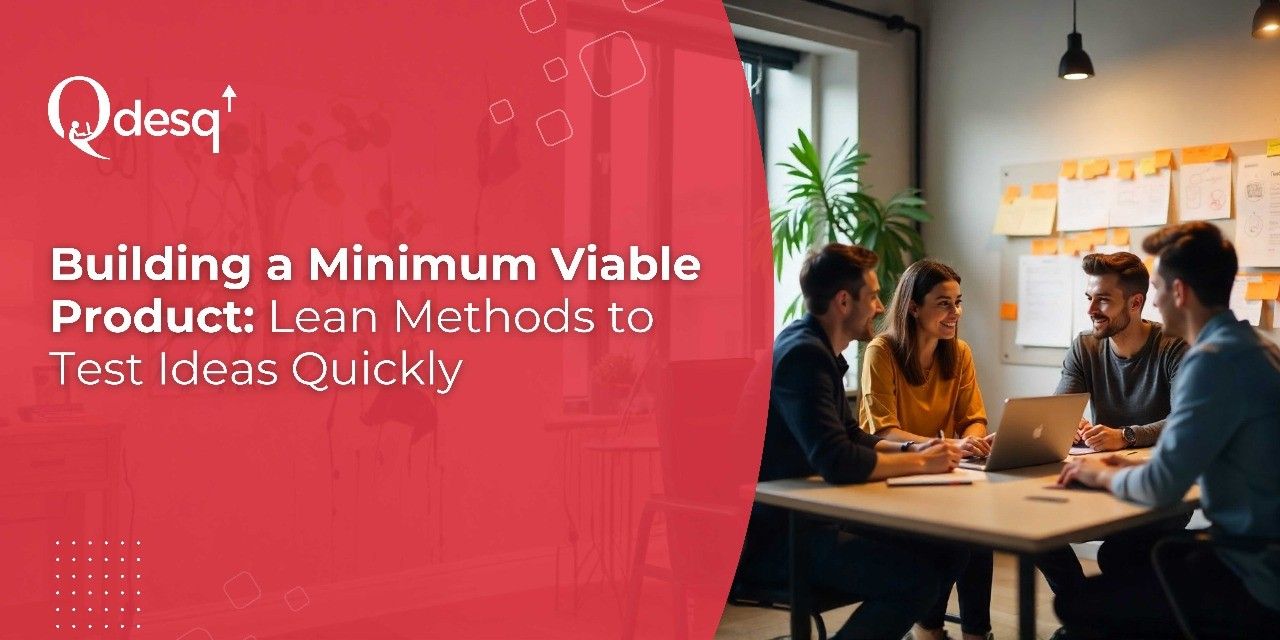Launching a new product is a high-stakes challenge. Companies—whether nimble startups or established businesses—face pressing timelines, tight budgets, and intense competition.
The question: how can you test an idea fast and improve it quickly without wasting resources or missing the mark with your target users? The answer lies in building a Minimum Viable Product (MVP) paired with lean methods. This strategy changes the way you approach innovation entirely.
What Is an MVP and Why Does It Matter?
A Minimum Viable Product (MVP) refers to the most basic version of a product that still provides actual value to early users, by concentrating on the key features necessary to address a primary issue. Instead of guessing what users want, an MVP lets you gather genuine feedback early to guide your next steps. Building a full product without this learning is costly and risky; the MVP helps you turn assumptions into facts before making bigger investments. This approach saves time, effort, and money, allowing you to focus on what truly matters for your customers.
Lean Methods: Testing Ideas Quickly and Wisely
Lean methods play a crucial role in developing an MVP by enabling rapid, low-cost testing of ideas. Instead of building a full product upfront, teams use simple tools like storyboards and wireframes to simulate user experiences. One effective technique is the “Wizard of Oz” test, where users interact with what seems to be a fully automated product, but key functions are performed manually behind the scenes. This approach allows teams to gauge user interest and usability early without heavy investment.
Adopting these lean methodologies helps reduce the time needed for development, speed up the learning process, and allows for rapid changes, ensuring the product continuously improves to better align with user requirements in each stage of development.
How to Build Your MVP: Essential Steps
1. Identify a Real Problem and Your Audience
Successful MVPs start with a crystal-clear problem statement. What pain point are you solving? Who has this problem? Deep market research, interviews, and observation uncover user frustrations and needs. Defining your audience with precision allows you to tailor your product’s value proposition genuinely.
2. Prioritise the Must-Have Features
Not all features are created equal. Use methods like the MoSCoW technique, which categorises features into Must, Should, Could, and Won’t-have, to select only the features that address your main user issue. Aim for simplicity and avoid overloading the initial product.
3. Map the User Journey Simply
Design the most straightforward path that a user would take to achieve their goal with your MVP. Clarity and ease-of-use matter more than flashy design at this stage.
4. Develop Quickly and Launch to Early Adopters
Use agile development principles to build the MVP as fast as possible. Early adopters give you critical real-world feedback to confirm or challenge your assumptions.
5. Collect User Feedback and Analyse Data
Leverage surveys, interviews, analytics, and direct observation to understand how users interact with your MVP. Prioritise actionable insights to guide improvements.
6. Iterate and Scale Thoughtfully
Use feedback to refine your product, improve features, or pivot strategies. Gradually add complexity only as user needs evolve and validate demand scales.
Learning from MVP Trailblazers
Many industry leaders began as MVPs. For example, Airbnb started by renting air mattresses to prove the demand for peer-to-peer accommodation sharing. Dropbox launched with a simple demo video inviting users to sign up before building the full app. These examples illustrate how MVPs help reduce risk, validate ideas rapidly, and build products that resonate with actual users—not just assumptions.
Workspaces That Support MVP Teams
Creating an MVP demands adaptability, teamwork, and laser focus, all of which thrive in flexible work environments. Coworking spaces for rent in India fulfil this need perfectly by combining affordability with professional infrastructure and vibrant communities, ideal for MVPs. Flexible workspaces offer reliable internet, meeting rooms for quick team huddles, informal lounges for brainstorming, and a much more. The right workspace lets teams work smarter and faster, fostering creativity and accelerating the MVP refinement process.
Embracing a Mindset of Validated Learning
Developing an MVP requires embracing uncertainty positively. It demands humility to accept user feedback, even if it contradicts original assumptions, and the flexibility to pivot without losing momentum. This approach fosters smarter resource allocation and keeps customer value at the centre of every decision.
Avoid the trap of overbuilding or underestimating the MVP’s purpose. It’s not a product launch but a stepping stone toward a market-fit solution.
When to Move Beyond the MVP
Expanding beyond an MVP is a significant milestone that clear metrics should drive. Growing user engagement, positive feedback loops, and increasing market demand signal readiness. Until then, focus on learning and refining, not scaling features prematurely.
Final Thoughts
Building an MVP using lean methods is a smarter approach to innovation. It helps you focus on what your customers really need, reduce risks, and speed up development. Combine this with the right workspace, and you have a solid base for sustainable success.
Ready to turn your idea into a reality with confidence and speed? Discover the ideal flexible office space tailored for your team’s MVP journey. Start smart, test fast, and grow intentionally. Find your perfect workspace with Qdesq and set your innovation on the right path today.











